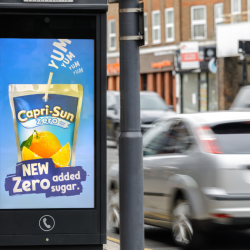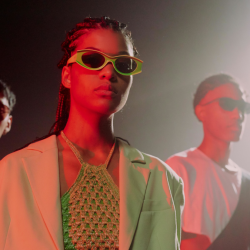What do young people want from brands? The million pound question on the minds of all marketers is how to engage younger audiences in a time of media fragmentation. Brand communication has had to adapt quickly to the digital-first age, and traditional advertising strategies have made way for emerging channels like influencer marketing.
Now with Gen Z and even Alpha, dominating the conversation and gaining monetary and political influence, brands want to engage with them from the start of their consumer journeys. Trouble is, with so much content on social media, how can you stand out from the crowd?
Here are three examples of brands and individuals that are successfully challenging the expectation of what connecting with Gen Z should look like, and finding new ways to disrupt the crowded space.
More than just a platform
It’s been a big year for Snapchat that is having a bit of a renaissance. Snap has grown its user base massively over the past year, especially among younger audiences. An originator in peer-to-peer storytelling, it has evolved from a simple messenger platform to a complete social universe where ‘likes’ have been traded for real human connections.
Unlike some other platforms, Snap hasn’t shied away from news content, but instead highlighted its value. Through its Snap Stars programme, it has helped train and promote emerging voices in factual news reporting. It has also continued to grow its news partnerships at a time when political content is seen as bad business on social media, which is an encouraging sign. The majority of Gen Z rely on social media to stay informed but are also increasingly sceptical of what they encounter, with only 22% rating platforms as ‘highly trustworthy’.
This makes educating creators on the practices of responsible news reporting, such as fact-checking claims, vital. It’s inspiring to see platforms take responsibility for mitigating the risk of misinformation by ensuring their users can always access reliable journalism.
As we head towards the US Presidential election in November when around 40 million Gen Zers are eligible to vote, current affairs discourse won’t die down. The platforms that provide news content whilst nurturing emerging creators who can tell these stories in a way young people can relate to, have a serious advantage. Important conversations can’t be kept away. Young people are curious and constantly looking for answers… but you have to do it on their terms.
Speaking the same language on social
If you must follow one social media account, let it be Duolingo. For years the company has adopted an unhinged, slightly absurdist brand of comedy posting, hooking onto timely pop culture moments. But why does this content resonate so well with Gen Zers, and in fact, all generations?
Firstly, the content is always tapping into the zeitgeist and micro-trends that most wouldn’t have heard of. It requires enhanced social listening and a deep understanding of what will take off and what kind of humour resonates across different channels. Secondly, Duolingo has young people creating content for other young people. Its TikTok account, for instance, was dormant until a young graduate decided to take the reins and start posting on the platform in 2021, growing the account to nearly 13M followers.
Like in our newsroom, to get young people clicking, it requires real creative input from the same demographic that will consume the content to truly make an impact. You can only immerse yourself in youth culture if you have the right people in key positions. But memes for the sake of memes can also backfire, Duolingo has seen that and tempered its content not to alienate people. This ‘anything goes’ style can still have some structure and convert views into product usage. Duolingo is by far the best-known company in its category, and no doubt its social strategy plays a big part in brand recognition.
Many brats, only one Charli XCX
Are you still having a brat summer? Ready for a demure, mindful fall yet? While the incredible powerhouse of Taylor Swift has boosted worldwide economies with her sell-out tour, the breakout star of the year that has captured the mood and essence of Gen Z is Charli XCX.
Already boasting some form of notoriety with 2010s hits like Fancy and I Love It, the incredible rise of Charli XCX in 2024 has been nothing short of genius. Despite being a millennial, her style is far from millennial-core. With its fast beats and cool girl cameos, the self-proclaimed brat’s vibe on the surface espouses a hedonistic nature but also deals with the messiness of youth, self-reflection and empowerment — all themes Gen Z can relate to.
Charli’s marketing strategy speaks for itself: from the physical stunts like the brat wall or pulling up in a bright green Tesla, to co-signing Kamala Harris’ presidential bid on X when Joe Biden stepped down in July — Charli and the team have not slipped once in engaging with our frivolous side. Songs like Apple and 360 have started their own crazes; the album has transcended music and become an attitude, a movement. Authentically being herself, and building her community along the way through a nod to imperfections, Charli has clearly understood the assignment and Gen Z have embraced her as their own.
With, not for, Gen Z
There isn’t a one-size-fits-all strategy when it comes to engaging with young audiences. Don’t be fooled by the success of meme culture — what drives brand recognition and engagement requires a deeper understanding of the consumers you want to reach. Younger people want cultural awareness but they also want honesty and purpose, which means crafting products and messaging that speak to them and the unique circumstances which they face.
Those that have found their niche and are doing it slightly differently are successful; whether that is leaning on genuine connections or embracing the absurd. Winning over the likes of Gen Z requires deep social listening skills and an understanding of their different triggers and ambitions.
These examples show three very different approaches, but all highlight the importance of understanding what Gen Z wants and developing unique responses to that. Crucially, it can’t be a top-down approach. If you want to talk to Gen Z, you have to make sure you share their perspective and let them in on the conversation.
Featured image: Sanket Mishra / Pexels


































